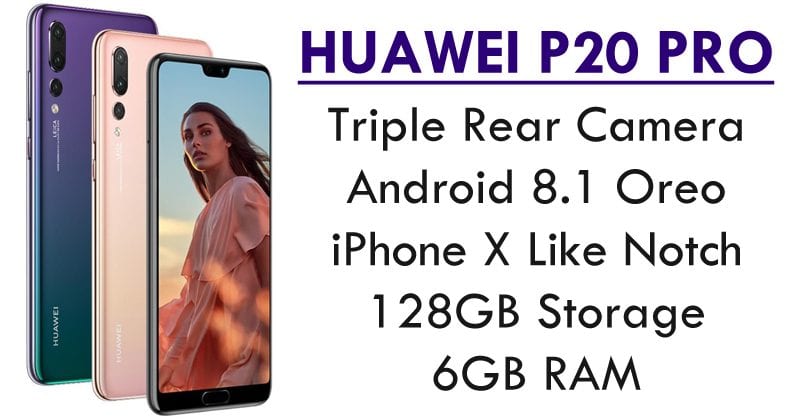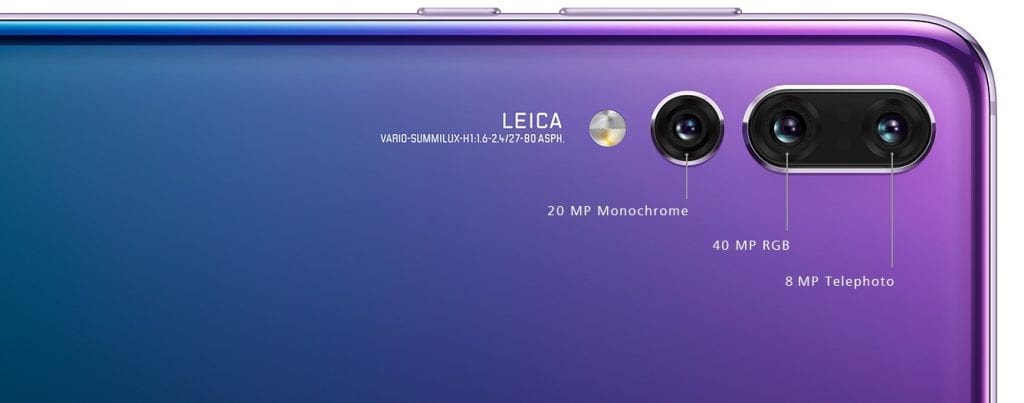Let’s start with Huawei P20 Pro. Its main highlight is the “Leica Triple Camera”: a 20-megapixel monochrome sensor with a f/1.6 lens; an 8-megapixel sensor with f/2.4 telephoto lens and optical image stabilization; and a 40-megapixel sensor with f/1.8 lens. The 40-megapixel sensor has an area 223% larger than the iPhone X, and 170% larger than the Galaxy S9+. Therefore, it has extremely high light sensitivity, reaching ISO 102,400 (most smartphones reach ISO 6,400). In addition, we have four different focus techniques here: laser, phase detection, depth and contrast detection. The camera has a “predictive focus” that detects motion and automatically chooses the mode that will give clearer images.
There is also a 3x optical zoom (and a 5x “hybrid zoom”); the colour temperature sensor, to improve the white balance in the images; and a dedicated ISP (image signal processor). And, of course, the camera has some artificial intelligence capabilities. Basically, the P20 Pro (just like P20) selects the most suitable mode for the scene, be it “macro” or “landscape” or “portrait” with the blurred background. Moreover, the P20 Pro can record slow-motion video at 960 frames per second in HD resolution, just like the Galaxy S9 and S9+. Now we can focus on the other specs. The P20 Pro is Huawei’s first smartphone with OLED screen. They are 6.1 inches with Full-HD+ resolution (2240 x 1080) and 18.7:9 aspect ratio. Yes, the screen has a notch at the top for the 24-megapixel front camera. But unlike the iPhone X, you can hide the “notch” in the settings – this places a black bar to hide it. The digital fingerprint reader sits on the bottom edge, which you can use as the Back/Home/Multitasking buttons through gestures (such as on Motorola smartphones). There is also 2D face unlocking system is available with the front camera. Inside we have the Huawei Kirin 970 processor, 6 GB of RAM, 128 GB of storage, 4000 mAh battery and IP67 resistance to water and dust. It has an aluminium frame and glass rear, but lack support for charging wirelessly. In turn, the Huawei P20 features 5.8-inch screen with Full-HD+ resolution and notch – which you can also hide in the settings. The panel is LCD instead of OLED. The fingerprint reader is on the bottom edge. It has Kirin 970 processor, 4 GB of RAM, 128 GB of storage and 3400 mAh battery. Its body, also of aluminium and glass, is only resistant to splashes (specification IP53). The front camera has 24 megapixels, while the rear camera is “only” dual, with monochrome sensor 20 megapixels and colour (RGB) of 12 MP.
Both the P20 and P20 Pro run on Android 8.1 modified with the EMUI interface. Both will be available in the colours black, blue, pink and twilight – a very striking gradient of blue, purple and turquoise. We also have the Porsche Design Huawei Mate RS. It’s basically the same as the P20 Pro, with one important difference: the digital reader sits under the screen and it will be available in black and red. Huawei has not announced the price or availability for the P20 or P20 Pro, but has warned that they will not be released in the US – the company is having headaches with the US government. So, what do you think about this? Simply share all your views and thoughts in the comment section below.
Δ




